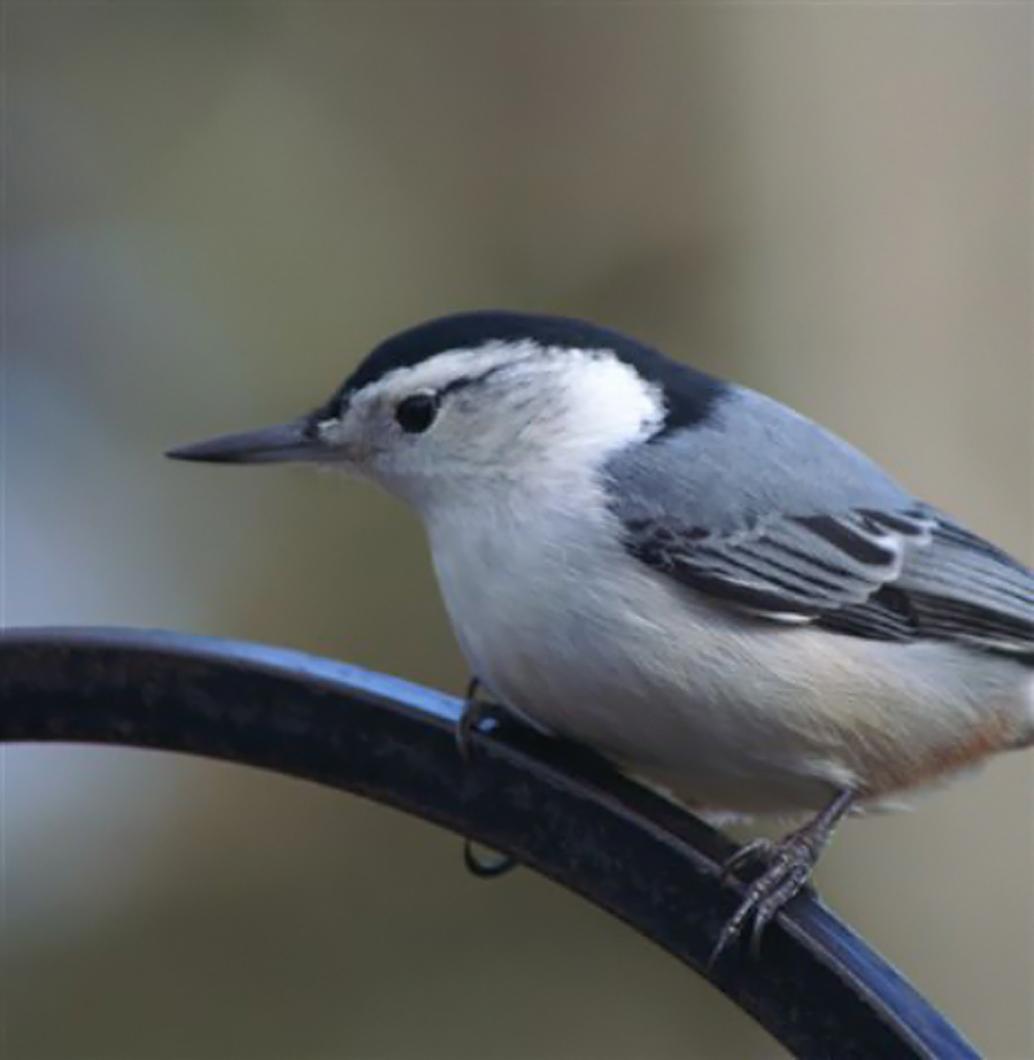Wow, I can’t remember such a colorful fall. The bright birds may have gone south, but the vegetation is filling in for the missing hues. The riot of color is incredible: golden yellow of sassafras, duller yellow tinged with brown of the horsechestnuts, purpley-red of sumacs, reds of swamp maples and Virginia creeper and mottled browns, greens and yellows of our oaks. Throw into the mix the greens of pitch and white pine and cedars (really junipers) and we have a spectacular array of colors.
Our migrants have left us for greener pastures filled with warmth, insects and fruit. We await the arrival of our wintering waterfowl, sparrows and buntings. It is time to dig out the bird feeders, wash them carefully and figure out if where we hung them last year provided the best views or if a little to the left or right might be better. I have already hung my feeders and always watch to see who will arrive first. As long as I can remember it has always been the white-breasted nuthatch, followed quickly by the black-capped chickadees and then the American goldfinches and house finches. It is fun to note the arrival of different species on your calendar and compare these dates from year to year.
Bird Sightings
I have received very few emails or calls informing me of the birds people have seen. Please call the bird hotline at 508-627-4922 and leave your sightings, or e-mail the info to birds@mvgazette.com. Thanks.
Rob Bierregaard sent me the last information on “his” ospreys that are carrying transmitters. There are 13 ospreys Rob has tagged and unfortunately Katy, Isabel and Hix have died. Rob figures that Katy and Hix probably were killed by great horned owls. Both their transmitters were recovered and the corpses found. Isabel made it to Venezuela before we lost contact. Rob has an associate in that country and hopefully he can find someone to check the last location given by Isabel’s transmitter and see if there is a corpse. Rafael somehow slipped out of his transmitter and opted out of the project. Hudson, Buck and Bea are settled in Venezuela. Ozzie and Moffett are spending the winter in Cuba, although Rob senses that Moffett may move south, and Mr. Hannah is in the Brazilian Amazon. Penelope continues to patrol the border between Suriname and French Guiana and lastly Caley is in the Dominican Republic very close to where Meadow was shot last year. There are maps for all these ospreys online at bioweb.uncc.edu/Bierregaard. The most interesting one is that of Mr. Hannah, as the Google maps show the fascinating terrain he traveled over in South America.
Rob Culbert was around Tisbury Great Pond and heard a spring phoebe call that sounded like an off-Island black-capped chickadee. This could either be a visitor or perhaps a young Vineyard chickadee not quite tuned up yet. He also heard a Virginia rail by Crab Creek and spotted five wrens, which he thought might be marsh wrens. I asked him, as I have many other birders who bird alone, to carry a camera for verification.
Oct. 21 Flip Harrington and I spotted a great egret at Sengekontacket Pond and an eastern bluebird and the escaped common teal at Janet Norton’s. The barnacle goose was not there, but returned on the 25th. Then Gus Ben David returned from the International Wild Waterfowl Convention to find that one of his barnacle geese had disappeared. So we do not have a new record for the Vineyard this time.
Another type of record we do have, however. Lanny McDowell’s ruby-throated hummingbird on Oct. 22 is the latest in Massachusetts this year.
Linda Ziegler e-mailed to say that there was a northern mockingbird around Thimble Farm. She asked if they were common. The first Vineyard record was in 1917 but they weren’t common until 1984.
Ed and Janice Belisle spotted a belted kingfisher in Edgartown on Oct. 23. This bird was probably passing through although a few overwinter annually.
Lanny McDowell birded Gay Head one more time on Oct. 24 and found many dark-eyed juncos and yellow-rumped warblers and was pleased to see two Eastern meadowlarks.
Tara Whiting, Kristen Fauteux and I walked the Quenames fields on Oct. 24 and our best birds were a northern harrier, Baltimore oriole and two Eastern meadowlarks. Later that day Flip Harrington spotted an osprey, a merlin, two northern harriers, a great blue heron, green-winged teal, mallards, black ducks, two black-crowned night herons, one greater yellowlegs and two Wilson’s snipe.
Oct. 25 Flip and I counted 500 double-crested cormorants, 25 black ducks and several ring-billed gulls in Black Point Pond. Off shore we spotted a common loon and four northern gannets. Along the fields we counted two northern harriers, many yellow-rumped warblers, 15 eastern bluebirds and two eastern meadowlarks.
Happy and Steve Spongberg walked Hancock Beach on Oct. 25 and spotted a late staying osprey, a red-tailed hawk, many yellow-rumped warblers and a flock of sanderlings. They also spotted two godwits and were not exactly sure which species. It would be most likely to be Hudsonian. Stay tuned!
Sue Silva, while walking along Tiah’s Cove, spotted a female wood duck and two Wilson’s snipe.
Please report your bird sightings to the Martha’s Vineyard Bird Hotline at 508-627-4922 or e-mail to birds@mvgazette.com.




Comments
Comment policy »